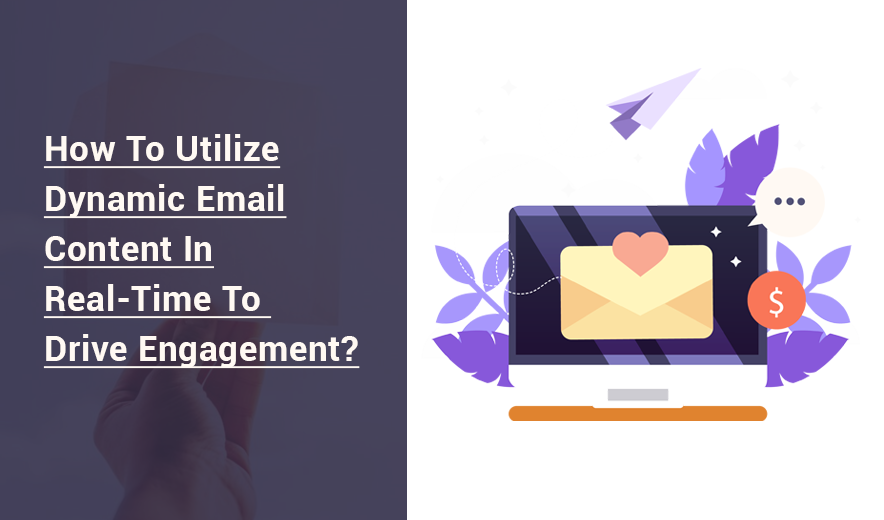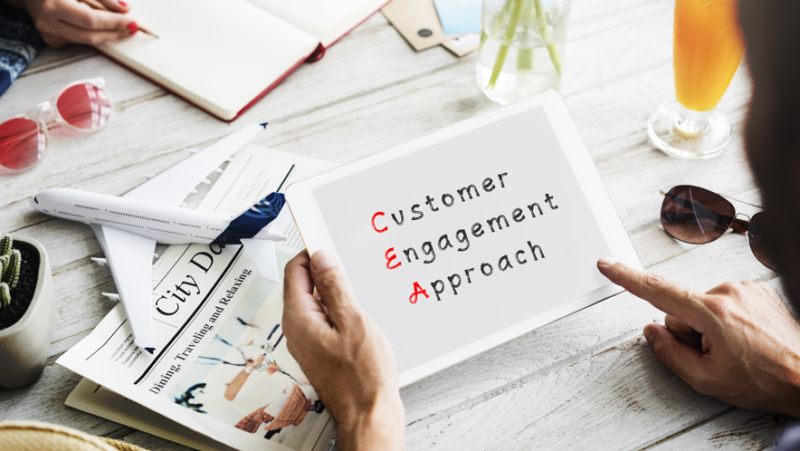Do you respond to emails you can’t relate to?
Now, think about it from a customer’s perspective. Your customers expect your messages to be hyper-personalized. Without dynamic email content, your efforts might go unnoticed. It’s a missed chance to connect with your audience.
Sales emails have less than a 25% open rate, according to research from Gartner. And with so many other companies targeting the same audience, standing out is tough. In such a competitive business landscape, integrating dynamic content into your email campaigns is essential for success.
What Is Dynamic Email Content?
Dynamic email content differs from your regular email content in terms of relevance, timeliness, and personalization. Unlike standard email messages, dynamic email content is highly personalized and focuses on a specific market segment. Adding dynamic content in email copies can help you improve customer engagement, build trust, and increase conversion rates.
You can craft dynamic email content based on customer data. This data may include factors like customer behavior, past interactions, location, feedback, etc. So, how do you utilize this information? List segmentation is the answer.
How Can You Craft Dynamic Email Content?
To create dynamic email content, start by organizing your customer data into segments. The process involves grouping your target audience based on specific criteria. Once you have grouped your target audience, you can create compelling email messages based on each group’s interests and needs.
Elements of dynamic content in email
You can use the following elements to craft and add dynamic content in email campaigns:
Customized Subject Lines
The subject line of your email determines whether your customers open it. If the subject line fails to grab the customer’s attention immediately, your email will get buried in their mailbox.
Customer’s name
There is no better way to show your customers that they matter. When you address them by their first name in your email, it makes them more likely to read what you have to say. Emails without a name can seem like they’re sent to everyone.
Personalized Message
Be it industry-specific terminology, context, or a specialized hook, your emails need to connect with your customers at a deeper level. Your message should be relatable to a customer’s specific needs and interests.
Multimedia elements
Adding multimedia elements like images, GIFs, stickers, and such can help your email go the extra mile. Personalized messaging isn’t the only thing you’re betting on for the success of your email campaigns when you add multimedia elements to it.
Special Offers
Special offers, coupons, discounts, and such can induce a sense of value in a customer. Special offers based on customer preferences, behavior, browsing history, geography, and others can influence your customers to make a purchase and feel valued.
What Are The Benefits of Dynamic Email Content?
Using dynamic content in email campaigns can boost click-through rates by an average of 14% and conversions by 10%, according to Semrush. Additionally, it has a positive impact on your revenue.
Some of the most prominent benefits of dynamic email content are as follows:
Increased Open Rates
Dynamic email content can help you achieve 6x higher transaction rates, according to a study conducted by Experian.
Personalized emails are more likely to grab recipients’ attention due to tailored subject lines and content. It leads to higher open rates and increased customer engagement.
Improved Conversion Rates
74% of marketers believe that campaigns with targeted personalization can increase customer engagement according to CampaignMonitor.
Personalization forges a stronger connection between the recipient and the sender. It increases the chances of them taking action, such as visiting your website or buying your product.
Enhanced Customer Experience
Utilizing dynamic content in email campaigns portrays how much your company values the recipient. When your emails tap into customer preferences, they become more relevant. Relevant emails can significantly improve customer experience.
For instance, Netflix’s personalized recommendation emails suggest shows and movies based on the user’s viewing history and preferences. It increases user engagement and customer retention.
Behavioral Triggers
Sending emails that match up with customer interactions, such as purchases or browsing history, can provide timely and relevant content. It can increase the chances of more engagement or conversion.
For instance, Amazon’s order confirmation emails include dynamic content such as recommendations for related products or accessories based on the purchased item.
Preference Centers
Preference centers empower customers to control the frequency and content of emails they receive. This means they only get messages that match their interests, leading to more interaction and fewer people unsubscribing.
For instance, brands like The New York Times allow subscribers to customize their email preferences. It ensures they only get content they’re interested in and helps in reducing email fatigue.
Dynamic Email Content Use Case
The NikePlus membership program –
Approach: Nike implemented hyper-personalization in their email marketing campaigns by offering personalized product recommendations. These recommendations are based on their customers’ browsing history, purchase behavior, and preferences.
Strategy: Through the NikePlus membership program, Nike collects data on customers’ fitness activities, style preferences, and favorite sports. They use this data to send targeted emails featuring products that match each customer’s interests and activities.
For instance, a customer who frequently runs outdoors might receive personalized recommendations for running shoes designed for outdoor terrain with related accessories such as water bottles and running gear.
Result: Nike’s hyper-personalized email campaigns resulted in increased click-through rates, conversion rates, and customer satisfaction.
A Brief Overview of Characteristics Of Dynamic Content in Email Campaigns
The following characteristics separate a personalized email copy from an ordinary one:
- Relevance: Your email should be relevant to the interests of your customers. Example: People living in the desert would love to learn about sunscreen rather than umbrellas.
- Timeliness: If your emails don’t show a product to your customers when they need it, they probably won’t buy it. Example: A Discount email can instantly influence a customer to buy a product when they are browsing it.
- Authenticity: Context and the sender’s credentials matter a lot in terms of credibility. Example: An email from an unknown sender with no context can be spam.
Summing It Up
Sending emails alone is no longer sufficient. Customers expect personalized experiences, and dynamic email content is the answer. Without it, you might miss opportunities to connect with your audience and identify selling opportunities.
Dynamic email content goes beyond simply addressing recipients by name, it’s about crafting messages that resonate deeply with your customers. By leveraging customer data and segmentation, you can create compelling content that drives revenue.
What’s Next?
Be a part of our community for free and access the best resources, trends, and new technologies from peers and industry experts. You can also check out our other awesome blogs over here.




